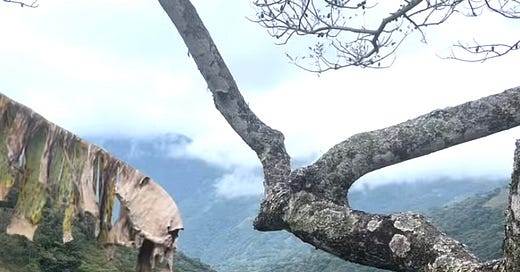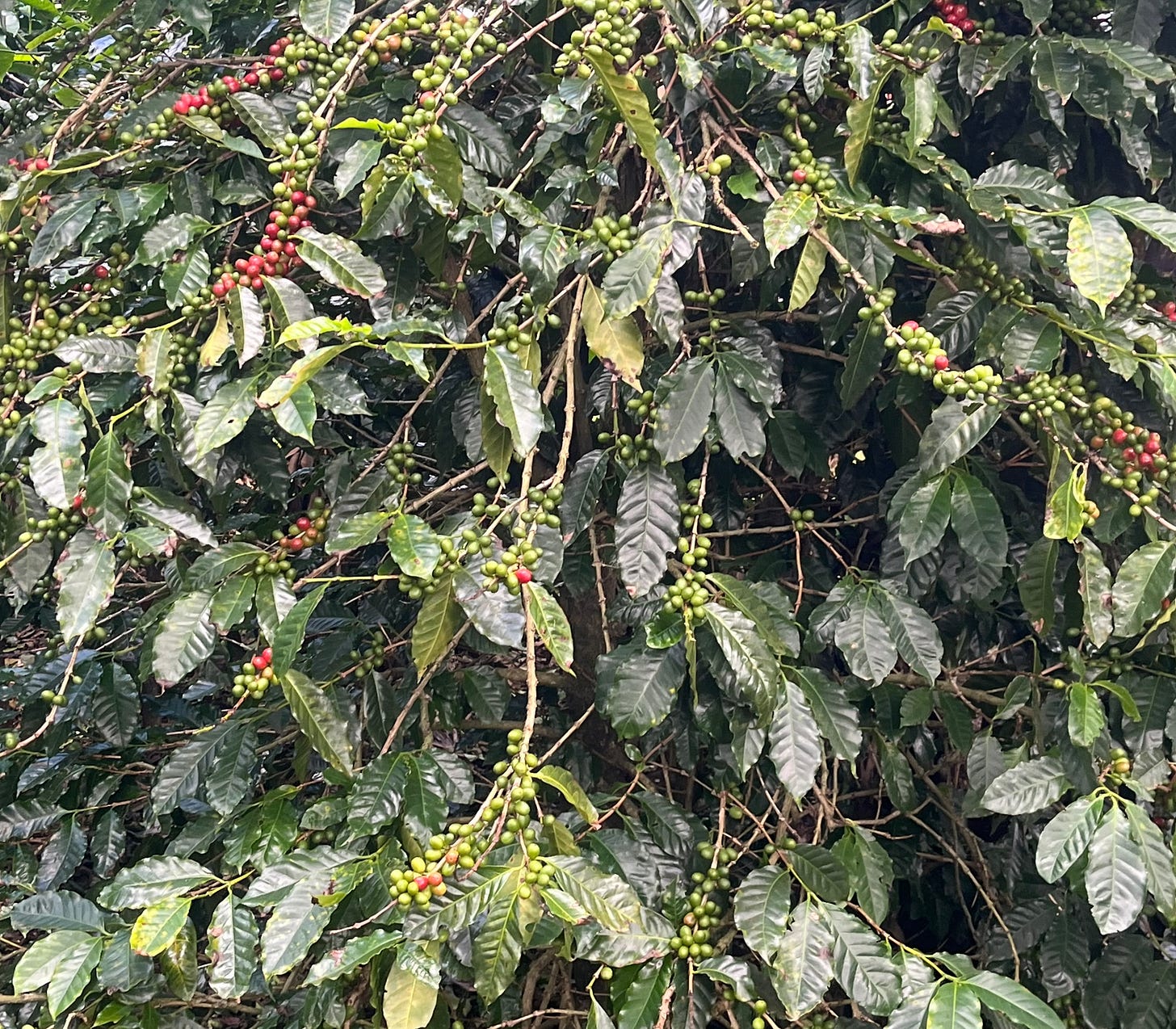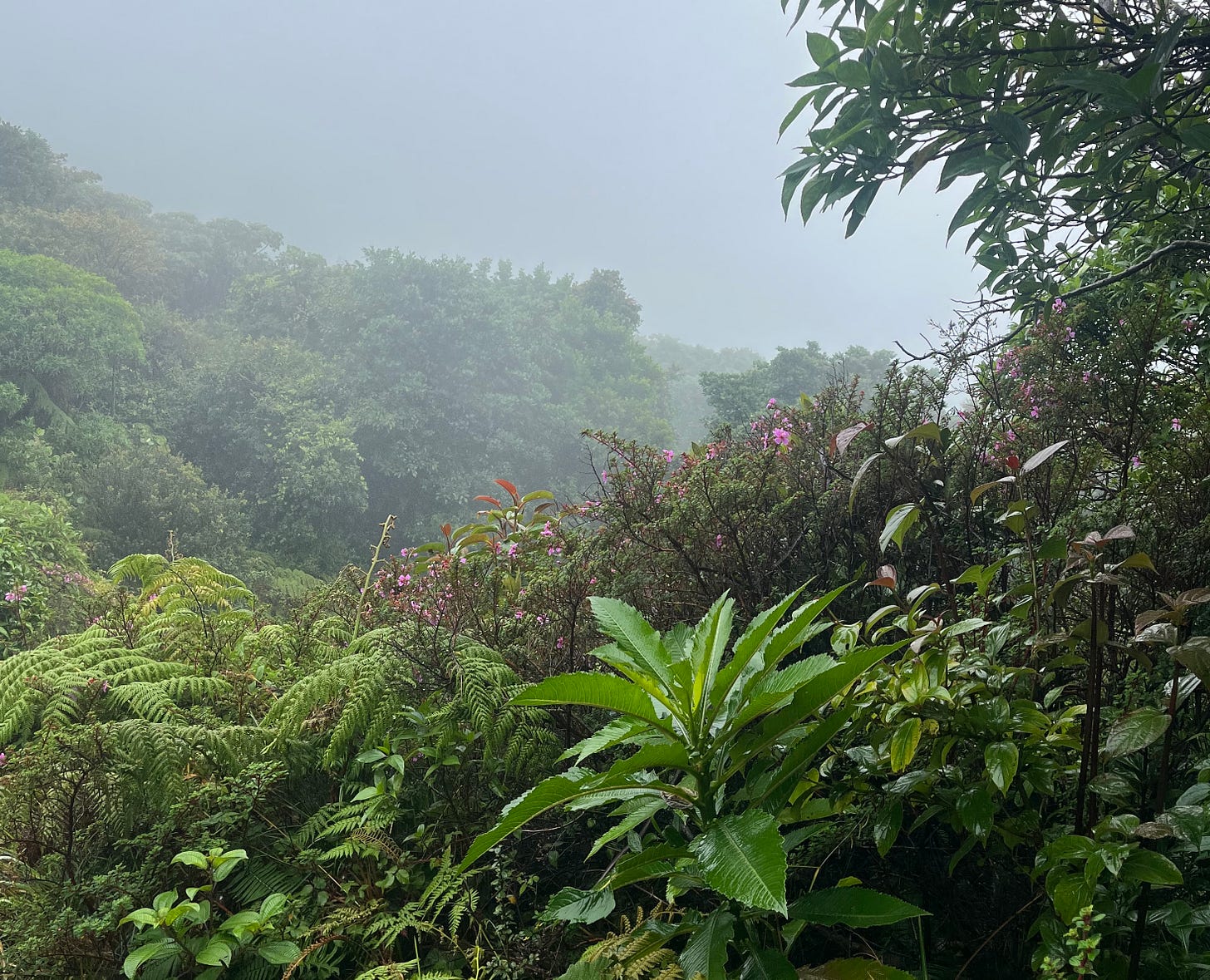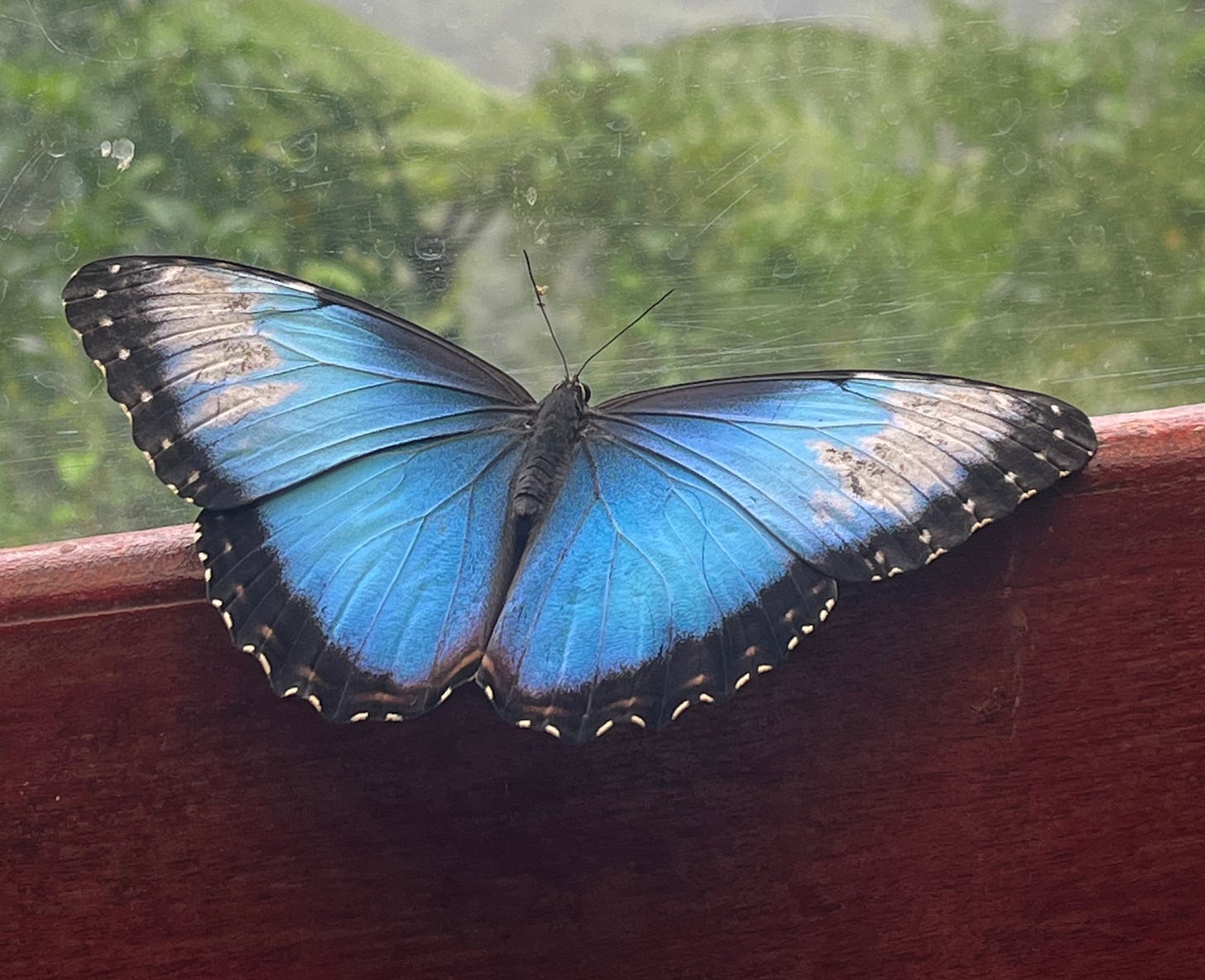Gazing out the window of the emergency exit seat by the wing, my photoreceptors experienced a hard reset—from rough urban gray to tender evergreen. The positive effects of green space washed over me like a warm bath.
During my five short but savored days in Costa Rica, I could feel my blood vessels relax. My wound-up shoulders untrussed. My forehead muscles, often scrunched like repurposed tissue paper, smoothed out like birthday cake frosting. And in this flow state, I was able to pay due respect to the intricacies of Pura Vida—the country’s slogan meaning “pure life.”
“What is it that makes life pure?” I pondered in anticipation of my travels.
In Costa Rica, it’s not just the pristine mountain waters, nourishing air, abundant wildlife, or other aspects of deep nature—but the simple and intentional way of living. The way they uphold traditions and generational wisdom of the people “de antes” (of the past). The metabolism of care for animals, the land, and each other. Unwavering generosity, sincere gratitude, and spontaneous joy define this culture (at least in my mind).
Below is my best attempt to share some of this treasure, giving you the slightest flavor of pura vida…
Café ☕️
My whole trip to Costa Rica was brought on by a sudden fixation to uncover the production backstory of the cups of coffee I consume (at least once) every day. Conscious consumerism, as you may figure coming from a Gen Z environmentalist, is incredibly important to me, and coffee is debatably one of the things I consume the most. So I set off on a mission to find a coffee plantation that would accept me as a temporary hire.
I would soon come to learn seasonal workers from abroad are incredibly common for coffee harvest in Costa Rica (with many families coming from Nicaragua and Panama to provide their services during peak season), though I think it’s safe to say twenty-something year old women from the US probably aren’t highly represented in their workforce demography.
Rather than make a temporary career pivot, I made the slightly less wistful but equally fulfilling choice to stay at a family-owned coffee farm through Worldpackers. I’d heard about this program from a friend who used it to stay at an Argentinian organic farm a few years back, and I could not be more grateful for the introduction. Her recommendation helped me turn mi fantasía de café into a beautiful stay at a finca agro ecológica—where I was blessed to experience far more than I could have planned on my travel vision board.
Before migrating to the family farm, I decided to spend 24 hours visiting some tourist traps near the capital city of San José. Ambitious after hours of air travel, I booked a full-day excursion that began the next morning at a spry 5:30 a.m.
First Stop: Doka Coffee Plantation. Starting the day strong and sufficiently caffeinated, I achieved what I thought was the my ultimate mission—learning about coffee production—in the first few hours of my trip. After feasting on some delectable gallo pinto (a traditional dish of rice, beans, plantains, eggs, and all the salsa Lizano) and many cups of coffee, it was time to get up close and personal with Arabica.
With passion and pride, my tour guide Ronald shared fascinating insights on the production cycle of coffee—from berry harvest to bean roast. Here are some of my favorite tidbits, which I continue to ponder over my morning brew:
Most coffee growers in Costa Rica harvest by hand. This is because the berries on a coffee plant ripen and redden intermittently throughout the season. While lower-grade plantations mechanically harvest and mix both unripe green and red berries, coffee pickers at gourmet Costa Rican farms take a rotational approach throughout the four(ish)-month growing season to pick the fruit at its peak, minding ecological longevity.
Coffee and bananas are good neighbors. Intercropping banana trees with coffee plants is very common, as they provide shade, mulch, and soil nutrients—not to mention supplemental income.
Ain’t no coffee when the sunshine’s gone. My travel window overlapped the region’s transition from spring to summer, which is normally peak harvest. Unfortunately, because of excess rain and a sunshine deficit, the beans were unseasonably low yield (which transformed my personal travel mission and opened the door to other forms of abundance.)
Coffee berries are underrated. Ronald had us taste test the coffee berries (i.e., the flesh surrounding the beans), which were deliciously sweet! Turns out, the fruit remnants (‘cascara’) can be circularized as a tea, compost amendment, biofuel, or an occasional snack for hardworking harvesters.
After many spontaneous natural discoveries through our rounds about the plantation, we continued our journey further up into the cloud forest to Poás Volcano—leaving a bookmark in my curiosity for Costa Rican coffee and culture.
El Bosque Nuboso ☁️
Second Stop: Poás Volcano. With a name like ‘cloud forest’ I should have had a bit more foresight into the fact I would not be leaving this tour dry. I was even heeded a second opportunity by my considerate tour guides, who made a special stop to purchase ponchos. Being the assumingly immune Chicagoan I am, I was left to marinate in my bold choice and brace the elements instead.
For me, feeling the rain against my skin, dripping from my hair and smeared across my face, invoked a thrill of childlike wonder I didn’t know I craved—completely untethered from western anthropocentric norms. Jurassic Park-style vegetation, with leaves the size of couch cushions, and a volcanic crater masked by cloud cover had me tapping into my imagination—feeling positive, relaxed, and deeply connected to the environment. I left this sulfuric scene with an amended personal definition of pura vida.
Third Stop: La Paz Waterfall Gardens. A hop, skip, and a jump later, we landed in La Paz Waterfall Gardens: home to birds, frogs, butterflies, monkeys, snakes, sloths, and jungle cats among other species. I’d never been so pleasantly overwhelmed by biodiversity. Wandering through the park was like traversing the jungle itself—only with a couple guardrails to avoid being eaten.
At the end of the wildlife tour, a series of waterfalls baptized me with compassion and curiosity. Appreciating the company with which I was traveling, I was captivated by a woman named Elsa. A 70-year-old solo traveler bursting at the seams with inquiries about anything and everything—from the ethical treatment of migrant workers to the venomous compounds from one of the country’s deadliest snakes. Elsa was also an enigma in terms of her physical mobility—cascading up and down flights of 200 steps with ease, taking every possible side quest.
As our day in the cloud forest came to a close, I found myself manifesting my future self to channel her method of living life to the fullest (i.e., pura vida).
La Finca 🏡
Fourth Stop: La Finca. The following daybreak, I began my adventures with an Uber, bus, and car ride. Despite my peaceful and enlightening experience to this point, worries racked my brain: Will my host family like me? How will I get along with the host children? Did they remember I’m vegetarian?
My fears began to settle as I rejoiced with my hosts in the town center outside its city block-sized church. In our first few moments of encounter, I learned a few important things: 1) Mauricio and Alejandra, my host ‘parents,’ were incredibly kind people who enjoyed the simple pleasures of the agricultural village where they both grew up; 2) They also knew and waved to just about every person we passed in the town square; 3) oh, and they also did not speak English.
Despite our mild language barrier, my trip to la finca was one of the most educational, genuinely immersive, and heartwarming travel experiences I’ve been on. I left feeling like I had been adopted into a new family in Central America, who welcomed me to partake in their day-to-day with an open invitation to return if ever I needed a reminder of what life truly has to offer.
As I reflect on some of the small things on the homestead that sparked joy and inspiration, here are a few I hope to replicate in my future home in honor of my ‘adopted family’:
Drying clothes on the line: It may have taken three days to remove the damp from my denim jacket but worth the energy savings!
Eating out of banana leaves: Tamales and other delicacies were boiled in banana leaves for farm hands to eat in the field—no disposable plateware needed.
Composting food scraps: Fruit and veggie scraps were tossed out into the fields for soil conditioning and cover (also reducing landfill methane emissions).
Raising free range chickens: And not just “being able to move vertically and horizontally” as the USDA defines it.
Walking along dirt roads: Grounding was a way of life in Costa Rica, and the lesser pavement meant less runoff and healthier plants.
Shopping secondhand: Thrifted clothes, which were referred to as ‘ropa americana’ (go figure), were quite common.
Harvesting cosmetic honey: Tiny bees (about half the size of a pinky nail) were raised to produce small amounts of honey for homemade skincare products.
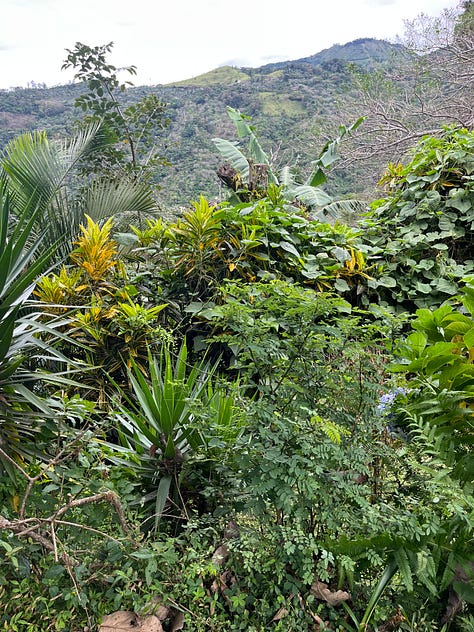


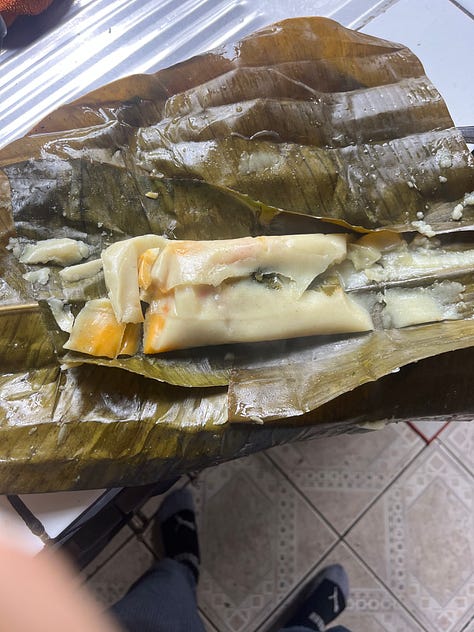

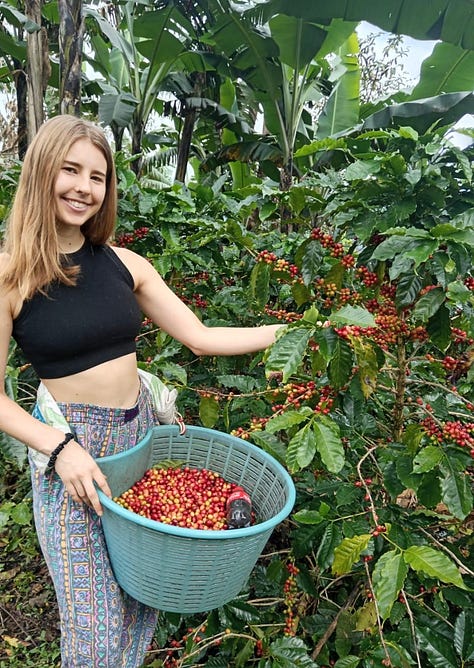
P.S. The photo of me picking coffee berries was mildly staged
La Pura Vida 💚
Fifth Stop: Back Home. While my pre-travel mission of becoming an expert coffee picker might have been a mild failure (and a pre-‘pura’ version of me might have been extremely frustrated over this), I realized this intent was simply a catalyst to learning about a way of life so unfamiliar and precious to me.
Sure, I returned home with sincere appreciation for all hands and habitats that fueled my caffeine addiction—but it wasn’t because I somehow learned everything there is to know about the coffee plant and supply chain. Rather, I gained an overall sense of appreciation for life, in all its forms.
Be it a coffee bean, a venomous snake, a 70-year-old solo traveler, a tiny bee, a generous travel guide, or a newly-adopted set of parents.
Through disconnecting from ‘modern society,’ I grew closer to a version of myself that sees the world through rose-colored glasses, embraces an attitude of presence and childlike wonder, and expresses empathy for the people and planet around me.
A version of me enlightened by pura vida.
P.S. The views in this article are my personal perspectives and do not necessarily reflect the view of my employer or any other person or entity.
Subscribe to my Substack.
Connect with me on LinkedIn.

